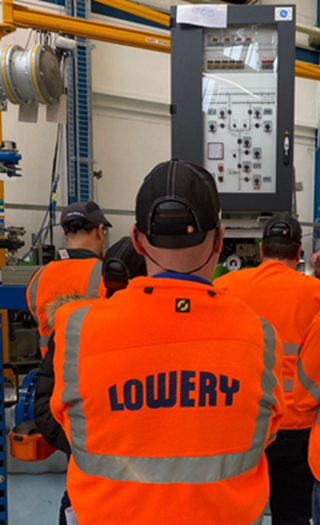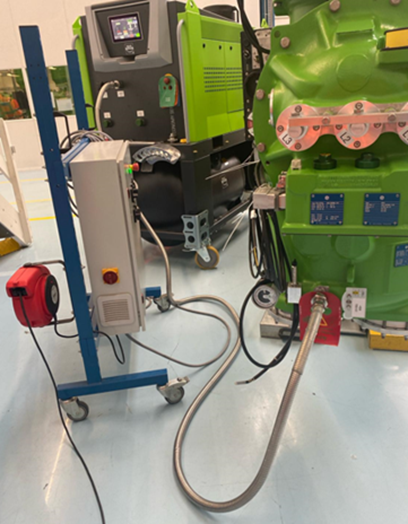What Makes a Good FAT? Factory Acceptance Testing with Head of Engineering, Gary Trearty
FAT (or Factory Acceptance Testing) is an oft-overlooked part of high-performance, right first time electrical installation. Our Head of Engineering. Gary Trearty, shares his thought leadership on what makes an effective FAT.
An under-sung step for cost-efficient, carbon-effective, defect-free installation of electrical plant is the factory acceptance test or FAT. Visiting Switzerland, Lowery’s Head of Engineering and Switchgear Installation Manager/CEM undertook a FAT for an upcoming project with associated long-lead times to be managed and positive productivity outcomes to be maximised.
Q: Why undertake a FAT?
Most basically, you could say its to check the Plant has been built to standard. Beyond this though, it’s an opportunity to collaborate with your client to ensure they’re satisfied with the unit and – in this time of increasing innovation – to understand and incorporate any differences or original aspects of the Plant into your installation strategy.
That could range from confirming your field wiring plans ready for your Construction Phase Plan and RAMS through to a truly novel procedure. In this case, this will be one of the first handful of units to be gassed with g3, a much more environmentally friendly SF6 substitute. SF6 is used in most GIS Switchgear in the UK and globally. The ability to engage in a hands-on gassing demonstration at the site of manufacture will support our competence in the successful onsite installation of the new Plant and the specific intricacies inherent in any new technology.
Note: g3 has a reduced GWP (Global Warming Potential) of more than 99% compared to SF6 which has a GWP 24,300 times greater than CO2 and a lifetime in the atmosphere of 1,000 years, putting it at the top of the Kyoto Protocol list.
Q: As Head of Engineering, what do you personally look for in a FAT and how does that positively support overall project delivery?
To protect our client’s budget and project programmes, there are four critical factors I examine:
- Has the plant been built to design? And if not, what changes to installation could keep the programme on-track
- Has the plant been built to the right specification and standards, e.g. drawings are one thing, compliance to EN standards is another. Again, capturing this within the lead times is critical to achieving project milestones
- No factory snags or retro-fits – and if there are, what’s the project impact?
- One I like to pay special attention to – is the ferruling correct? If it isn’t, the wiring plans won’t work
Q: What would you say makes your approach distinct and beneficial to our clients?
We visit with our clients and give them the benefit of an Installer’s point-of-view. Manufacturers are rightly focusing on manufacture and fabrication to the agreed designs and specifications, so we take a view on the site installation challenges – e.g. adaptation to RAMs and best ways to install the multi-cores within project deadlines.
Q: What are the collaborative outcomes of a shared FAT?
Ultimately, this is about compliant equipment which satisfies the client and any final adjustments we might need to make to the agreed installation strategy. It’s critical that the client is happy with and signs-off every aspect before the Plant leaves the factory.


